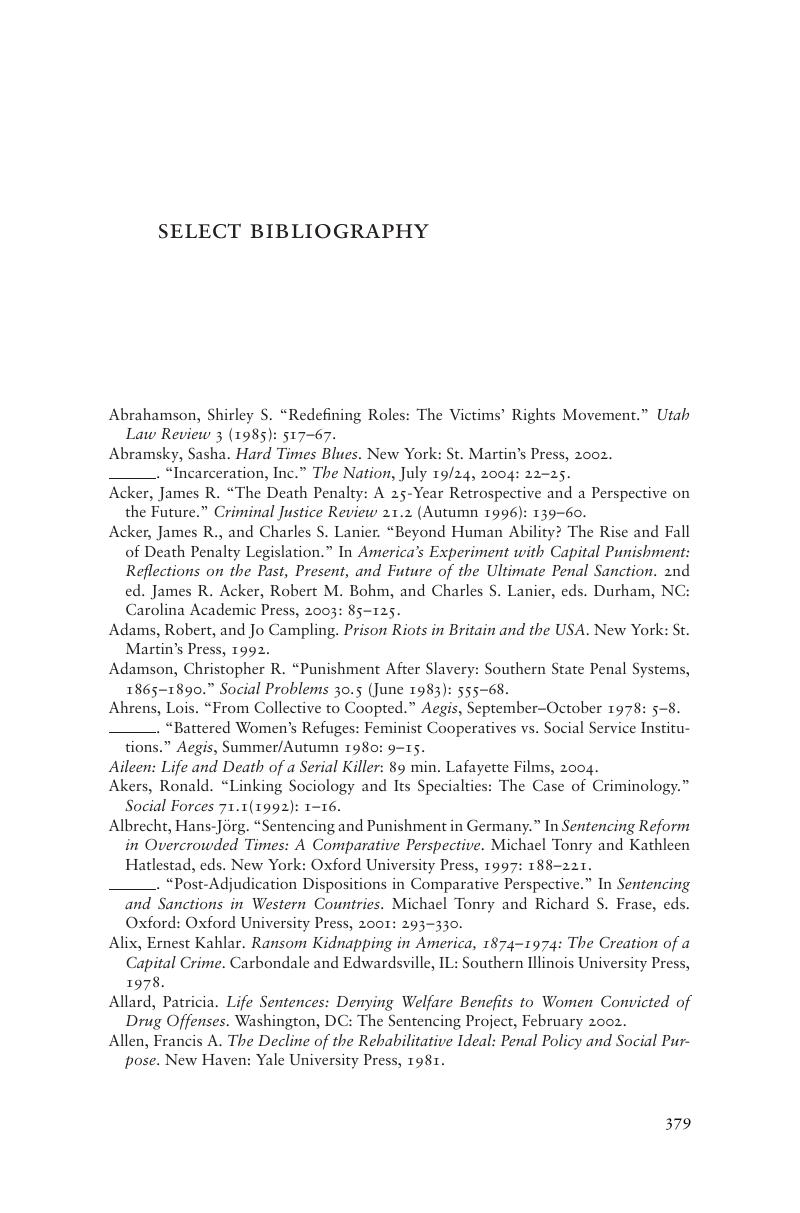Book contents
- Frontmatter
- Contents
- List of Figures and Table
- Preface and Acknowledgments
- 1 The Prison and the Gallows: The Construction of the Carceral State in America
- 2 Law, Order, and Alternative Explanations
- 3 Unlocking the Past: The Nationalization and Politicization of Law and Order
- 4 The Carceral State and the Welfare State: The Comparative Politics of Victims
- 5 Not the Usual Suspects: Feminists, Women's Groups, and the Anti-Rape Movement
- 6 The Battered-Women's Movement and the Development of Penal Policy
- 7 From Rights to Revolution: Prison Activism and the Carceral State
- 8 Capital Punishment, the Courts, and the Early Origins of the Carceral State, 1920s–1960s
- 9 The Power to Punish and Execute: The Political Development of Capital Punishment, 1972 to Today
- 10 Conclusion: Whither the Carceral State?
- Notes
- Select Bibliography
- Index
- Titles in the Series
- References
Select Bibliography
Published online by Cambridge University Press: 05 September 2012
- Frontmatter
- Contents
- List of Figures and Table
- Preface and Acknowledgments
- 1 The Prison and the Gallows: The Construction of the Carceral State in America
- 2 Law, Order, and Alternative Explanations
- 3 Unlocking the Past: The Nationalization and Politicization of Law and Order
- 4 The Carceral State and the Welfare State: The Comparative Politics of Victims
- 5 Not the Usual Suspects: Feminists, Women's Groups, and the Anti-Rape Movement
- 6 The Battered-Women's Movement and the Development of Penal Policy
- 7 From Rights to Revolution: Prison Activism and the Carceral State
- 8 Capital Punishment, the Courts, and the Early Origins of the Carceral State, 1920s–1960s
- 9 The Power to Punish and Execute: The Political Development of Capital Punishment, 1972 to Today
- 10 Conclusion: Whither the Carceral State?
- Notes
- Select Bibliography
- Index
- Titles in the Series
- References
Summary

- Type
- Chapter
- Information
- The Prison and the GallowsThe Politics of Mass Incarceration in America, pp. 379 - 428Publisher: Cambridge University PressPrint publication year: 2006

